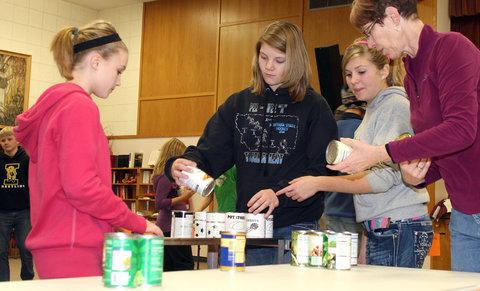Lucy was a retired guide dog who, during her working life, gave birth to 32 puppies, many of whom also became guide dogs. My wife got involved with guide dogs by accident — she saw a striking Labrador walking down Fifth Avenue and asked the person walking it for the breeder’s name. Instead she heard about a program where volunteers take puppies for a year and train them in basic obedience before they’re ready for formal training as guide dogs.
When I came into the picture a few years later, my wife had trained several dogs before becoming a foster parent, as it were, for Lucy, a yellow Labrador who had been selected as breeding stock.
As the years went on, we traveled back and forth to the foundation for Lucy to be bred and to whelp her puppies. We got to see how the school turned energetic puppies into well-trained guides. We also started to make larger donations. In 2007, we paid to sponsor a puppy, Ocho, from Lucy’s last litter and then asked to train it.
When that year was up and we had to give him back, my heart would have been broken had I not seen the good these dogs do for people. Ocho is now guiding a young woman who sends us periodic updates.
A few years ago, a friend asked if I’d like to become involved with anothergroup that helps blind people achieve their full potential in life. I agreed and have been giving time and money since.
Today, probably 90 percent of the money my wife and I give to charity each year goes to groups involved with helping the blind. Before Lucy came into my life, I didn’t have a dog, know any blind people or think much about charity beyond writing a check to my alma mater’s annual fund.
In giving this way, we also unwittingly waded into one of the big debates among donors and their advisers: is it better to give in response to an emotional need or feeling, or are dollars better spent when tied to a metric that measures how effective they are?
“The whole issue of measuring and metrics and trying to have impact data is, I think, a very contemporary part of philanthropy,” said Thomas E. K. Cerruti, former personal lawyer to Sam Skaggs, a billionaire philanthropist who made his fortune in supermarkets and drugstores. “What motivates people to give? For selfish reasons, a name on a building is at the top of the list. But some people want to effectuate something that has some personal interest to them. Other types of motivations are hard to analyze.”
Mr. Cerruti, who founded a Web site to link donors with nonprofits, said he never tried to presume why Mr. Skaggs gave the way he did, and felt it was something too personal to ask. “He really cared about being a catalyst for opportunity primarily for those who would benefit the most from that opportunity,” he said.
We have been emotional givers from the start. It always seemed like a pure good to support groups that helped blind people. We’ve never looked at the ratings from Charity Navigator or GuideStar on either group. But we have followed closely what both organizations have done. We may have gotten lucky.
“The giving with the heart people, they may go wrong in trusting an organization that is not trustworthy,” said Gene Tempel, founding dean of Indiana University’s Lilly Family School of Philanthropy. “One of the pieces of advice we give to people is get to know the organization. It means walking into the organization and asking questions. It means asking for a copy of an annual report.”
Ani Hurwitz, who retired this week after 24 years of working at the New York Community Trust, said she came from a family of emotional givers.
“My father gave a lot to religious stuff because he was religious,” she said. “He was also a bleeding heart.”
She recalled him crying as he watched the nightly news and then making a donation to a charity aimed at easing whatever troubling situation he had seen.
Even though she has worked in philanthropy for decades and knows how to evaluate nonprofits, she said she was personally moved by stories more than measurements on the impact of her money. She gives money to Doctors Without Borders because she admires their courage in caring for people in poor, war-ravaged places. She recently gave $250 to help buy a telescope for students in the Bronx because she thought it would be great for children who don’t get to travel to gaze at the stars.
“I don’t look at metrics,” she said. “Let’s say we make a $75,000 grant to reduce poverty in Bushwick. Do you really think anyone can evaluate if our $75,000 did that? Or was it someone else’s $75,000 grant? Can you even evaluate that?”

Article source: http://www.nytimes.com/2013/06/29/your-money/charitable-giving-from-head-or-heart.html?partner=rss&emc=rss
